We’re in the homestretch now: Only four days left until Pokémon Sword and Shield for Nintendo Switch launch worldwide. So far, online reaction to these games has been very mixed, but we know there are plenty out there very excited to embark on a brand-new Pokémon adventure! I (and the rest of the Nintendo Wire team) wanted to lead up to the games’ launches by looking back at each generation of Pokémon games: their strengths, their weaknesses, what they brought to the series, and even what they took away.
Yesterday, we looked back on Generation III; on Saturday, we thought fondly about Pokémon Generation II; and on Friday, we did Generation I. Let’s continue on with Day Four by looking back at Generation IV: Pokémon Diamond, Pearl, Platinum, HeartGold, and SoulSilver Versions.
On your journey, you will meet countless Pokémon and people. I’m sure along the way you will discover many things, perhaps even something about yourself.
Pokémon Diamond and Pearl Versions were Nintendo’s first foray into Pokémon on platforms other than its Game Boy line. I was close to finishing up my freshman year in high school when they launched for Nintendo DS, the console I bought entirely to play Animal Crossing: Wild World about a year before. I had the white DS Lite model complete with copies of Wild World, Tetris DS, and Elite Beat Agents, the latter of which I got as a Christmas gift from my older cousin.
I don’t have a clear recollection of the lead-up to Gen IV, which is strange given how much I adored Gen III. I feel like my interest in the series waned due to real-life responsibilities, like starting high school — or maybe time in general eroded my passion. Regardless of the reason, I didn’t follow Gen IV’s development as closely as I did Gen III’s, but I still bought Diamond close to launch. And while the circumstances around the purchase may’ve been a little fuzzy, I can distinctly remember how I felt playing Diamond for the first time:
I don’t like this.
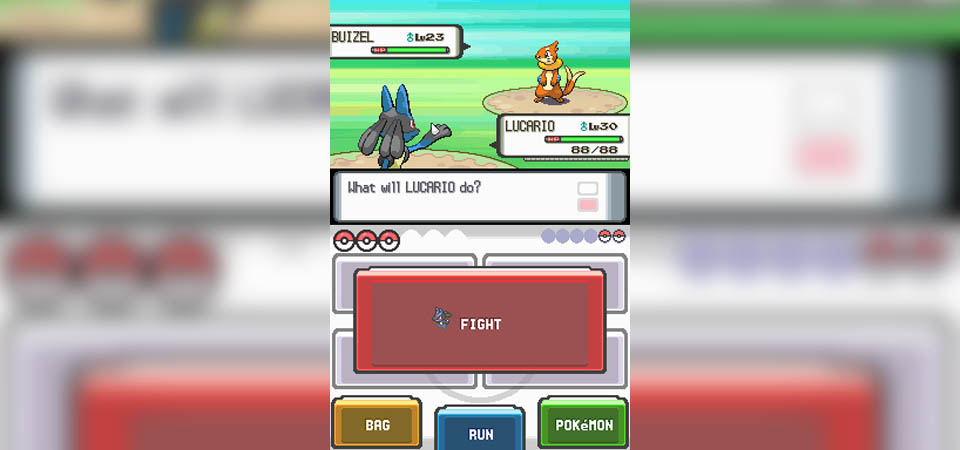
Having returned to Diamond years later, my opinion changed greatly, but in 2007, I was not pleased with the game. The Sinnoh region seemed so uninspired compared to Hoenn… so sterile. The soundtrack seemed awkward, the new Pokémon weren’t my favorite, a huge chunk of older Pokémon were MIA, and a huge chunk of new Pokémon weren’t available until the post-game. Worst of all, Pokémon Diamond and Pearl were SLOW. Like, painfully slow. Was I going crazy? Did Pokémon battles always take this long? Why did it feel like years passed between navigating from menu to menu, dialogue box to dialogue box?
Most of these issues were resolved with the third “enhanced” version, Pokémon Platinum, which came out in 2009. Sinnoh was made more interesting, with fallen snow in routes, touched-up cities, and enhanced areas like Stark Mountain (which was made to actually resemble an active volcano) and the Battle Zone (which was given some tropical flair). The Sinnoh regional Pokédex was greatly expanded to include more past Pokémon (meaning Elite Four Fire-Type master Flint, the lamest Fire-Type master ever, could actually have Fire-Type Pokémon on his team). Battles, text boxes, and the game in general were all sped up, too. Platinum fixed almost every problem I had with Diamond. The problem is, it shouldn’t have been up to a third version to make Gen IV’s principal games good… and I think the only reason I have fond memories of Gen IV proper is because of Platinum.
I was hard-pressed to find a party I liked, so my team in Pokémon Diamond Version consisted of Infernape, Feraligatr, Manectric, Leafeon, Gallade, and Flygon. Here’s where the issue with the Sinnoh regional Dex in Pokémon Diamond is perfectly illustrated: only Chimchar and Ralts could be found during the course of the main game. I had to get Totodile (because I didn’t like any of the Water-types available by normal means in Pokémon Diamond), Electrike (only available after the Elite Four), Eevee (only available after the Elite Four), and Trapinch (also only available after the Elite Four) via trading or transferring from other games so I could play with them throughout the campaign. Diamond and Pearl’s regional Dex was just awful, but it was fortunate that Game Freak introduced so many different means of getting favorable Pokémon into the game thanks to the new Pokémon Global Trade System and Pal Park.
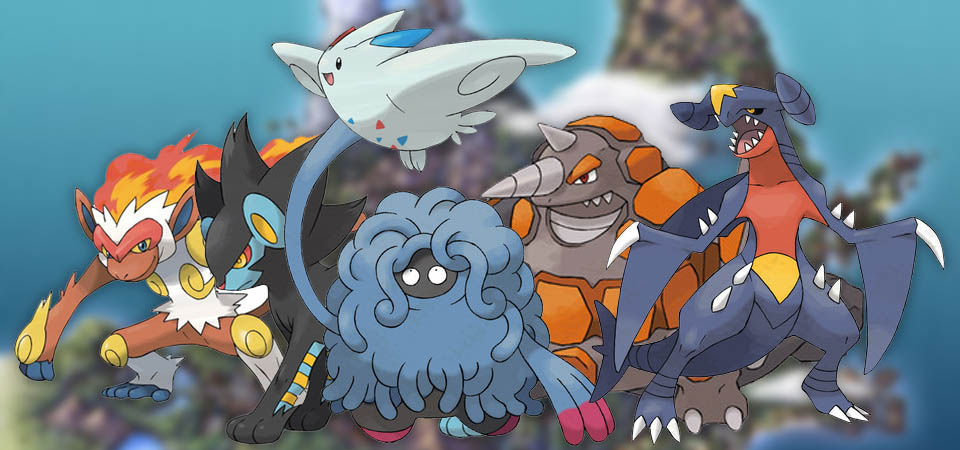
In Platinum, my team was a bit better: Infernape, Luxray, Tangrowth, Rhyperior, Togekiss, and Garchomp (all of which are available to catch or obtain in Sinnoh, and most before the Elite Four) and I was able to beat the game without needing breaks due to slog-related frustrations. For me, Gen IV would’ve been completely ruined had it not been for Platinum Version’s redemption, as well as the two games that followed: HeartGold and SoulSilver.
My Rattata is different from regular Rattata. It’s like my Rattata is in the top percentage of all Rattata.
Game Freak and Nintendo really spoiled us in 2009 and 2010. Not only did we get the superior version of Pokémon Diamond and Pearl in the form of Platinum, but we also got Pokémon HeartGold and SoulSilver, widely considered to be among the greatest Pokémon games ever made. And while nothing will ever compare to Pokémon Emerald for me, HeartGold and SoulSilver are by far the greatest remakes Game Freak has ever put together. The amount of content they stuffed into these titles was mindblowing, and it’s a shame they’ve never really been able to match the standards they set in these games since.
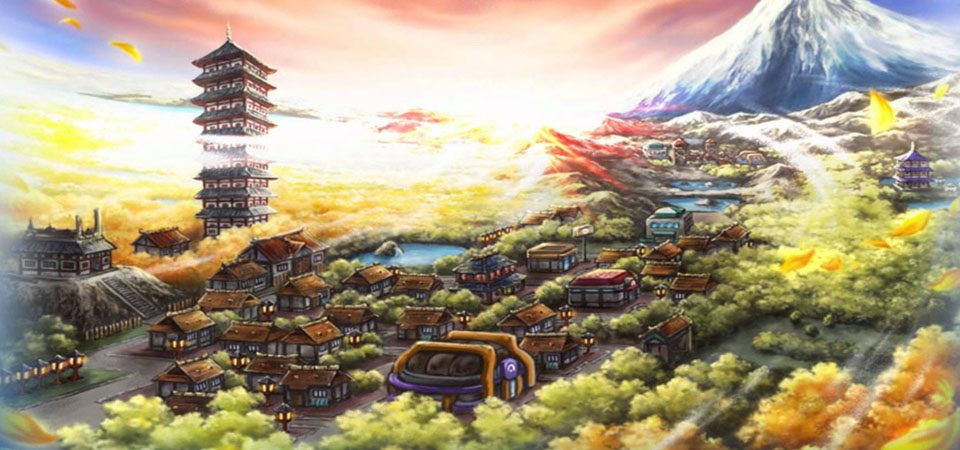
I followed Pokémon HeartGold and SoulSilver’s development since they were merely rumored, hinted at by the gold-and-silver floor colors in a Pokémon Diamond and Pearl Pokémon Center, or whatever that whole thing was about. They were the talk of a ton of my friends my junior year in high school, with pre-calculus class discussions usually a mix of polynomials and “what Starter are you picking?” By the end of my senior year, HGSS finally came out, and they completely lived up to all the hype. The games were gorgeous, adding so much character to the already-colorful Johto region (Ecruteak City was made absolutely stunning), and packed with new and returning features. Coolest of all, they were technically remakes of Crystal Version, with additions like Suicune’s role in the story and characters like Eusine appearing in the games.
My team in HeartGold was made up of Feraligatr, Victreebel, Pidgeot, Magmortar, Electivire, and Mamoswine at first, but I later switched out Victreebel for Sceptile because Sceptile’s cool and Victreebel kinda freaks me out. While I was able to get an Electabuzz in-game to get Electivire, Magmortar’s line was exclusive to SoulSilver, so I had to improvise. And by “improvise,” I mean use the super-cool-at-the-time Pokéwalker peripheral that came bundled with the game to get a Magby. You could walk around with it and earn “watts” (just like my much-beloved Pokémon Pikachu 2 device from the original Pokémon Gold, Silver, and Crystal days), obtain items, and catch Pokémon. It turns out, Nintendo’s been helping me get off my butt long before Pokémon GO and Ring Fit Adventure were ever things.
This place… Can you feel it? There are no Pokémon here at all. Time isn’t flowing and space isn’t stable. A world where the rules are broken.
The advancements made to the Pokémon series in Generation IV weren’t massive, but were still significant. Gen IV brought 107 new Pokémon to the series, bringing the total to 493. It also introduced 113 new moves, 47 new Abilities, four new Poké Ball variants, and the return of the real-time and days-of-the-week systems from Gen II. Building off Generation II’s foundation, Gen IV introduces two more day periods on top of Gold, Silver, and Crystal’s three.
For the first time ever, the game world was rendered in three dimensions instead of exclusively through sprites. Moves began being designated “physical” or “special” depending on the moves themselves rather than their Types. The Global Trade System was also introduced, allowing players to trade and battle Pokémon over the internet for the very first time. The games utilized the Nintendo DS’s two screens with the “Pokétch,” which boasted numerous handy apps like a clock, calculator, Berry Searcher, Friendship Checker, Day-Care Checker, and more. Gender differences were introduced, giving sprite variations to some creatures depending on their sex. Pokémon Contests, introduced in Gen III, were given a revamp and enhancements to become Pokémon Super Contests. And the ability to store items in the PC was taken away, but Bags had item limits removed, rendering PC item storage redundant.
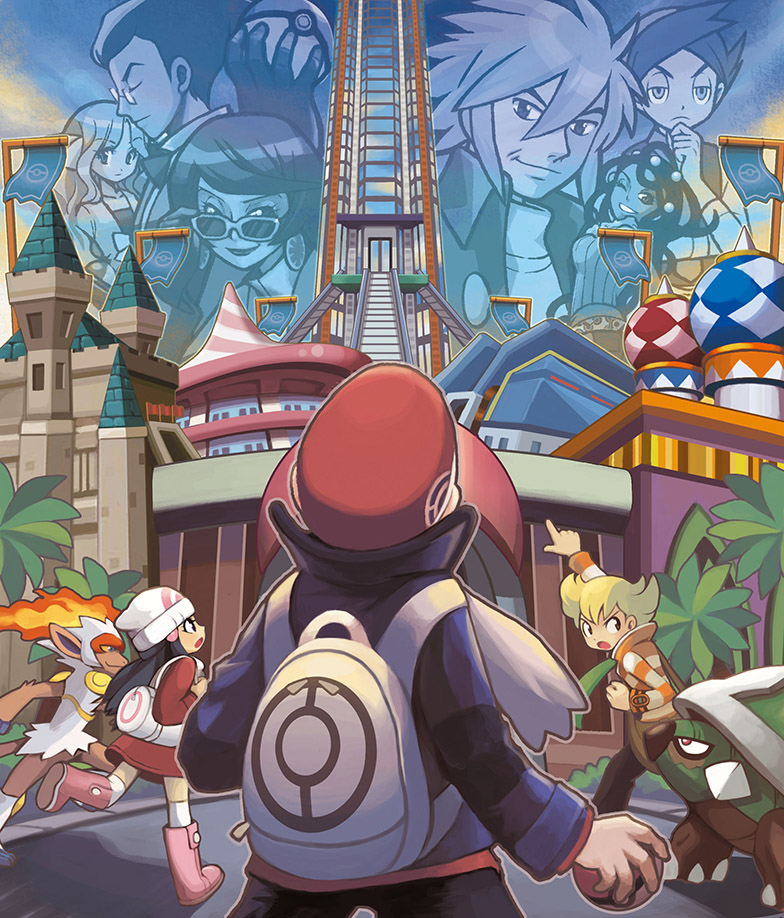
Platinum Version introduced a brand-new Battle Frontier, with new facilities and Frontier Brains different from those in Hoenn, plus the ability to rematch Gym Leaders in the new “Battleground.” HeartGold and SoulSilver, meanwhile, introduced Pokémon that could follow the player outside of battle almost anywhere in the overworld, Pokéathlon games, and the ability to register two key items instead of just one.
The Gen IV Pokémon games also had many distinctive qualities. Diamond and Pearl were the first games to not have the lab of the region’s Pokémon Professor in the player’s hometown, the first to have the rival’s Starter Pokémon not at Level 5 during their first battle, and the first in which all three Starters gain a second Type through evolution. Interestingly, Diamond and Pearl are also the most compatible Pokémon games, able to connect with all core series Generation III, IV, and V games, plus the Pokémon Ranger games, Pokémon Battle Revolution, and My Pokémon Ranch.
HeartGold and SoulSilver Versions include the Champions from each of the previous paired versions: Blue, Lance, Steven Stone, and Cynthia all make appearances in the games. HGSS are also the only pair of remakes to not gain any new Types that weren’t available during the time of their original versions: FireRed and LeafGreen gained the Dark and Steel Types while Omega Ruby and Alpha Sapphire gained Fairy. HeartGold and SoulSilver are also the final Pokémon games to include a Game Corner.
Because the human spirit is weak and incomplete, strife has appeared… This world is being ruined by it… I find the state of things to be deplorable…
Generation IV’s plot continues the higher-stakes storytelling that debuted in Gen III and ramps it up even further. Diamond, Pearl, and Platinum start off in Twinleaf Town, where the player (default name either “Lucas” or “Dawn”) heads to best friend Barry’s house to go to nearby Lake Verity to search for Legendary Pokémon. They eventually run into Professor Rowan and receive one of three Starter Pokémon: Turtwig, Chimchar, or Piplup.
They receive Pokédexes and set off to explore Sinnoh and conquer the Elite Four, battling Gym Leaders and the evil Team Galactic along the way. Team Galactic, headed by madman Cyrus, is dedicated to creating a “world without spirit,” using Legendaries Dialga, Palkia, or Giratina to accomplish its goals. The player defeats Team Galactic and the Legendary Pokémon, clobbers the Elite Four, and is crowned the Sinnoh League Champion. Pretty standard Pokémon fare.
Pokémon HeartGold and SoulSilver follow the plot of Pokémon Crystal Version pretty much to a T, so I’m not gonna cover them — you can check out our Gen II retrospective if you want to learn more! Pokémon Platinum, on the other hand, introduces a few changes to the Diamond and Pearl story, with new characters Looker and Charon, plus an expanded role for box Legendary Giratina and an entirely new location: the Distortion World.
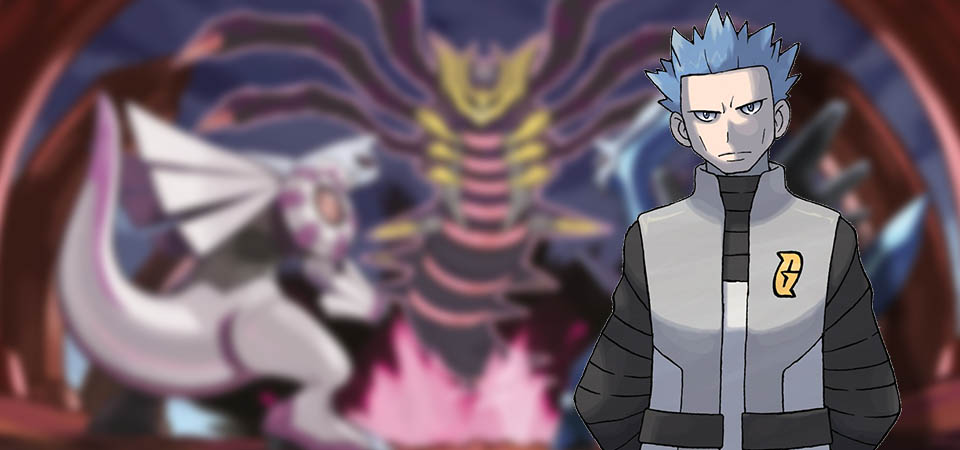
Gen IV’s story wasn’t all that special to me until Platinum came along with its reality-warping Distortion World and chaos monster Giratina, but it was still pretty much more of the same I’d seen in Pokémon Ruby, Sapphire, and Emerald. Replace Team Magma/Aqua with Team Galactic, their goals of expanding the land/sea with destroying the universe, and you’ve got pretty much the same tale. I suppose Cyrus was a cool change of character for the big bad: he was aloof, calculating, and completely inhuman in his disposition. He was given a backstory in the form of his parents’ neglect and his rejection of emotions, which sort of made him a more interesting villain than Giovanni or Maxie or Archie, but he was still very… typical, in a way. Still, I can’t help but think Game Freak’s more nuanced approach to Cyrus help set the stage for the brilliant storytelling (at least, in comparison) in Generation V.
Sinnoh was so boring to me in Diamond and Pearl, but that was all remedied in Platinum when it was given a bit of a makeover to be more obviously set in a colder climate. I did enjoy the space-and-time themes of the games making their way into the region itself, and Sinnoh overall had a bit of a celestial, mysterious air to it thanks in part to its music and set pieces. We received some brand-new types of locales in the games, like the powder-covered, northern town of Snowpoint City and the massive Mt. Coronet.
Overall, I think I like Gen IV’s aesthetic the best out of any Pokémon generation. The sprite work done in Diamond, Pearl, Platinum, HeartGold, and SoulSilver is so charming to me, and while it continued in Gen V, it wasn’t exactly the same given Black, White, Black 2, and White 2’s experimentation with perspective. These were the best the in-battle Pokémon depictions and overworld characters would ever look, in my opinion.
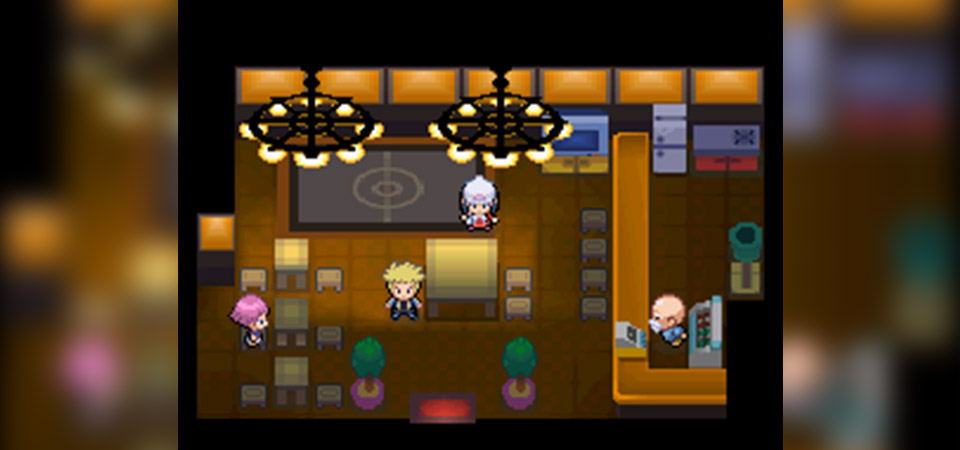
Gen IV’s new Pokémon were also some of my favorites, especially the evolutions we received for older monsters. Infernape, Luxray, Roserade, Floatzel, Ambipom, Drifblim, Mismagius, Honchkrow, Mime Jr., Spiritomb, Garchomp, Lucario, Toxicroak, Weavile, Magnezone, Rhyperior, Tangrowth, Electivire, Magmortar, Togekiss, Leafon, Glaceon, Gliscor, Mamoswine, Gallade, Dusknoir, Froslass, Rotom, Darkrai, Shaymin… You’d be hard-pressed to find a poorly-designed Pokémon in Gen IV’s ranks, lemme tell you.
Oh, and while I don’t really like Combee or Vespiquen on their own, I did catch a Shiny female Combee during my playthrough of Pokémon Diamond, so I have a bit of an attachment to them. I mean, do you realize how rare it was for me to find a Shiny female Combee in the wild? Combees only have a 12.5% of being female, and they have to be female to evolve into Vespiquen!
Yes, I’m bragging. Yes, I had an adult friend play the lottery for me right after catching her. Yes, I lost hundreds of dollars doing that. No, this little tangent isn’t going anywhere, so let’s just move on to the last section.
It’s OK, though. The tougher you get, the tougher we can get, too. There’s no end to Pokémon.
Gen IV was a tough generation for me to really get into. It had a bumpy start with Diamond and Pearl, but ultimately redeemed itself with Platinum and HeartGold/SoulSilver. Today, I look back at my adventures in Sinnoh with fondness, tempted to finally pick up a copy of Pokémon Pearl Version and do it all over again. But then I remember how tortuous and slow Diamond was and I decide against it and instead pray to Arceus that Game Freak can find its way out of the recent quality-control problem it’s had with its games since Gen VI and somehow make a decent Diamond/Pearl/Platinum remake on the Switch.
…Yeah, I’m not holding my breath, so maybe I’ll just buy another copy of Platinum.
Simply put, if you’ve never played a single Gen IV game, it’s never been a better time to try one out. If you’ve read this entire article, it’s no secret I think Platinum is superior to Diamond and Pearl, so if you’re debating which version to get, I just saved you a load of time. As for the Gen II remakes, you can’t go wrong with either version, so pick the one with the Box Legendary you prefer. Between Platinum and HGSS, there’s plenty of Pokémon goodness to keep your eyes glued to your Nintendo DS for days, weeks, and even months to come.
What’re your thoughts on Pokémon Generation IV? Let us know in the comments and be sure to catch us tomorrow for our retrospective on Generation V!
Leave a Comment

